
Browse an alphabetical list of photographs. These historical images portray people, places, and events before, during, and after World War II and the Holocaust.
<< Previous | Displaying results 431-440 of 2641 for "Photo" | Next >>
View of the main street of the Nordhausen concentration camp, outside of the central barracks (Boelke Kaserne), where the bodies of prisoners have been laid out in long rows. Nordhausen, Germany, April 13–14, 1945. This image is among the commonly reproduced and distributed, and often extremely graphic, images of liberation. These photographs provided powerful documentation of the crimes of the Nazi era.
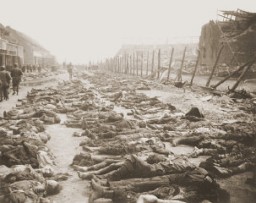
Corpses of victims of the Gunskirchen subcamp of the Mauthausen concentration camp. Austria, after May 5, 1945.
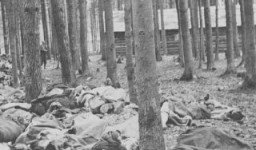
The bodies of former prisoners are stacked outside the crematorium in the newly liberated Buchenwald concentration camp. Buchenwald, Germany, April 23, 1945. This image is among the commonly reproduced and distributed, and often extremely graphic, images of liberation. These photographs provided powerful documentation of the crimes of the Nazi era.
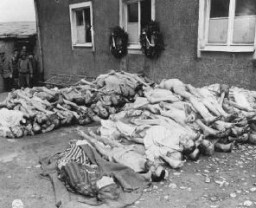
The bodies of former prisoners are piled outside the crematorium at the newly liberated Dachau concentration camp. Dachau, Germany, April–May 1945. This image is among the commonly reproduced and distributed, and often extremely graphic, images of liberation. These photographs provided powerful documentation of the crimes of the Nazi era.
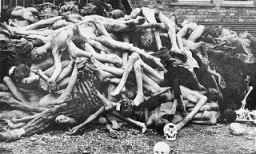
An American medic and soldier stand by the corpse of a prisoner shot on the road near Gardelegen. The prisoner was shot by the SS when he was too exhausted to continue on a death march. Germany, April 14-18, 1945.
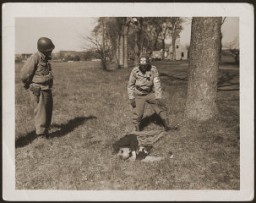
Palestine police remove the body of a refugee (draped in a Jewish flag), killed aboard the refugee ship Theodor Herzl during its unsuccessful attempt to run through a British naval blockade. Haifa port, Palestine, April 14, 1947.
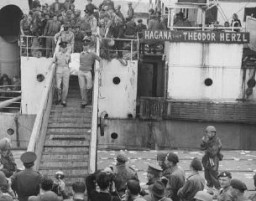
View of the bombed-out city of Nuremberg. Visible in the distance is the twin-spired Lorenz Church, and on the right, a statue of Kaiser Wilhelm I. Nuremberg, Germany, 1945.
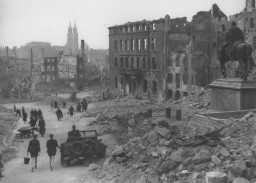
View of Rotterdam after German bombing in May 1940. Rotterdam, the Netherlands, 1940.

Bone-crushing machine used by Sonderkommando 1005 to grind the bones of victims after their bodies were burned in the Janowska camp. August 1944.
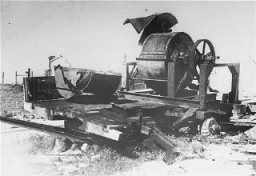
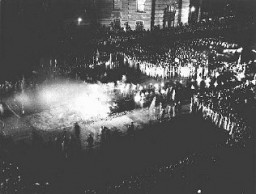
We would like to thank Crown Family Philanthropies, Abe and Ida Cooper Foundation, the Claims Conference, EVZ, and BMF for supporting the ongoing work to create content and resources for the Holocaust Encyclopedia. View the list of donor acknowledgement.